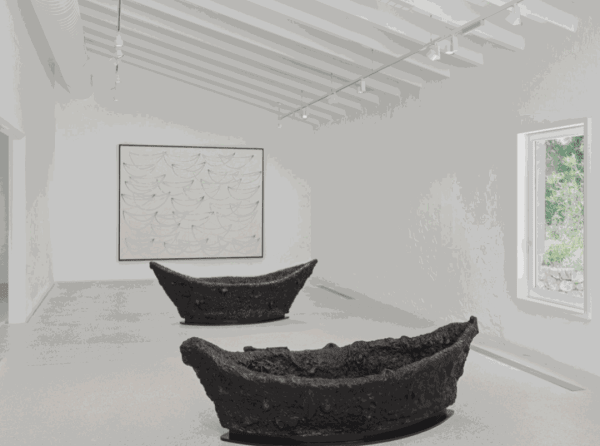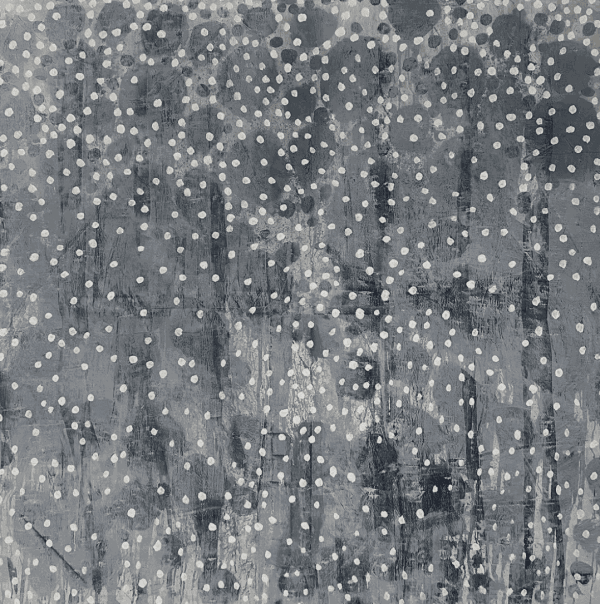As I start to dot all of the I's and cross all of the T's in my studio, I face the most daunting tasks.
Titling my work.
A few weeks ago, I spoke to Rebecca Morrill from Phaidon Books, who asked me, " Why don't you just leave your work untitled as many other artists do?" I defended the creative need to title work, stating quite confidently that Untitled was not OK, that it was selfish and that all abstract work should offer a way in.
I was too confident, answering the question without really thinking about the answer properly.
Where was my humility and respect for other artists and other artworks? For the tradition of painting?
I keep a notebook in my studio.
If I hear something, read something or find something that I feel is interesting and relates to what I’m doing, then I write it down, and then when paintings are finished in my studio, I have something to refer to, to help me.
But I’ve been so busy making work for the exhibition that I’ve yet to make notes, and it’s a dilemma.
Faced with the task of finding titles for 30 new pieces is more challenging than actually making the work.
As I type How to Title Abstract Paintings into Google Bard, hoping for an AI miracle - another act of desperation - how can a machine have the emotional connection to my own paintings?
I just have to learn to trust my instinct, to follow my gut.
Looking at my favourite art books, however, has been really useful. What was interesting was how I flicked through the pages, alighting on a painting that I Loved and then looking at the title, the size, the medium and the date. This begs the question as to whether titles are necessary at all?
Pat Steir
I love Pat’s work; I love the scale of it and the fact that she still makes her own work. I am in awe of her colour, bravery, and Eastern philosophical practice. I have this wonderful book, published by Cheim and Read, full of her own abstracted drip paintings.
Her titles refer to the colours she used when making the work - Naples Yellow and Mica 2013 & Two Whites Over Antique Red Over Cadmium Red. 2013.
A conversation yesterday suggested that this was a hangover from the modernists - but I like her approach.
As far as I am aware, they are never exactly repeated, altered slightly, but never identical - each painting being given its own title.
Rashid Johnson
I’ve never seen one of Rashid’s paintings in the flesh, but I keep an article from Modern Painters - April 2012 in my office. I love the repetition in his work; although now more sophisticated, the work has always pulled my creative heartstrings. I would have loved to have seen his exhibition in Menorca last year, Rashid Johnson: Sodade.
Sodade derives from Saudade, a Portuguese word not easily translated into English. It hints at homesickness, but in a visceral sense, a hits you in the belly, longing for home. In Welsh, this word is Hiraeth, which is also not easily translated into English.
His titles are often Untitled (Anxious Man Series), for example.
A series of artworks that carry the same title over years of practice.
A title that has legs!
Robert Ryman
I have the Robert Ryman catalogue for his solo exhibition at The Tate Gallery and the Museum of Modern Art in New York in 1993. It’s one of my favourite books and is very precious to me. Most of the work in the catalogue is Untitled, with others having short, punchy titles to hint at his ideas. Surface Veil 1, 2, 3, 4, 5, etc. and Director, 1983
Perhaps the Ryman archive sits comfortably between the Untitled and Specific Titled era?
“What good does it do, after all, to impart explanations?” Picasso once said. “A painter has only one language.” And for Picasso and many other artists, that language is visual. (Somewhat hypocritical when you think of Picasso’s own titling of his works).
This point was further cemented by abstract painters in the 1950s, Clyfford Still declaring, “I want no allusions to interfere with or assist the spectator,”
But these comments, although radical in the early-mid 20th Century, do not consider the image-rich society we find ourselves in today and the recognition of more female artists.
Duchamp famously said that a “title is an invisible colour”—and it’s a colour that, for better or worse, wiggles its way into even the most resistant artworks.
Pat Steer may be particularly clever when titling her works with the colours she uses. Almost stopping this invisible colour in its tracks.
I realise that ideas recur in an artist’s work and that if the original artwork’s title is perfect, this title can move forward with new paintings as the ideas are revisited throughout an artist’s career. The Anxious Man Series, for example, by Rashid Johnson
I do this myself, but then I feel like I’ve cheated. My limited vocabulary stifles my ability to develop interesting complementary titles for the work. I know this is a self-limiting belief, and if a title feels right and leads to the development of different paintings, then it is OK to use the same title.
My own titles are usually extremely personal; I Think About You All The Time, I Can Feel Them Moving Away From Me, and This is How I Remember You are placed alongside work that I’ve made as a reaction to something I have experienced. Titles like Magic Carpet, Yours or Mine, Mustard and Custard and Both Fucking Yellow are a little more playful but are still firmly rooted in my emotional response.
I believe it is important to provide a title for a work of art; for the audience, the collector, the galleries that exhibit the work and the archive. I’m not organised enough to have an archive of 200 paintings, all with the same title!
Writing this newsletter has reaffirmed my preference, and no matter how difficult I find it, my work is better with rather than without. It feels nurturing and generous and helps me to cement ideas.
Years ago, I was listening to a conversation with Tracy Emin. It was at the New Turner Gallery in Margate, and she was being interviewed by Stephen Fry. I can’t quite recall the exact interview, but I can recall her talking about titles, and she was adamant that work should be titled and that a few simple words really helps to get across the ideas to the audience. I remember being struck by her comments because they seemed so feminine, so brave and so honest.
But then I think about her early work, the tents, and the confessional aspect of her work and realise that words are integral.
But integral to what?
To her art or to being a woman?
Or to both?
And as women, are we more inclined to title artworks in an attempt to nurture an audience?
What do you think?



